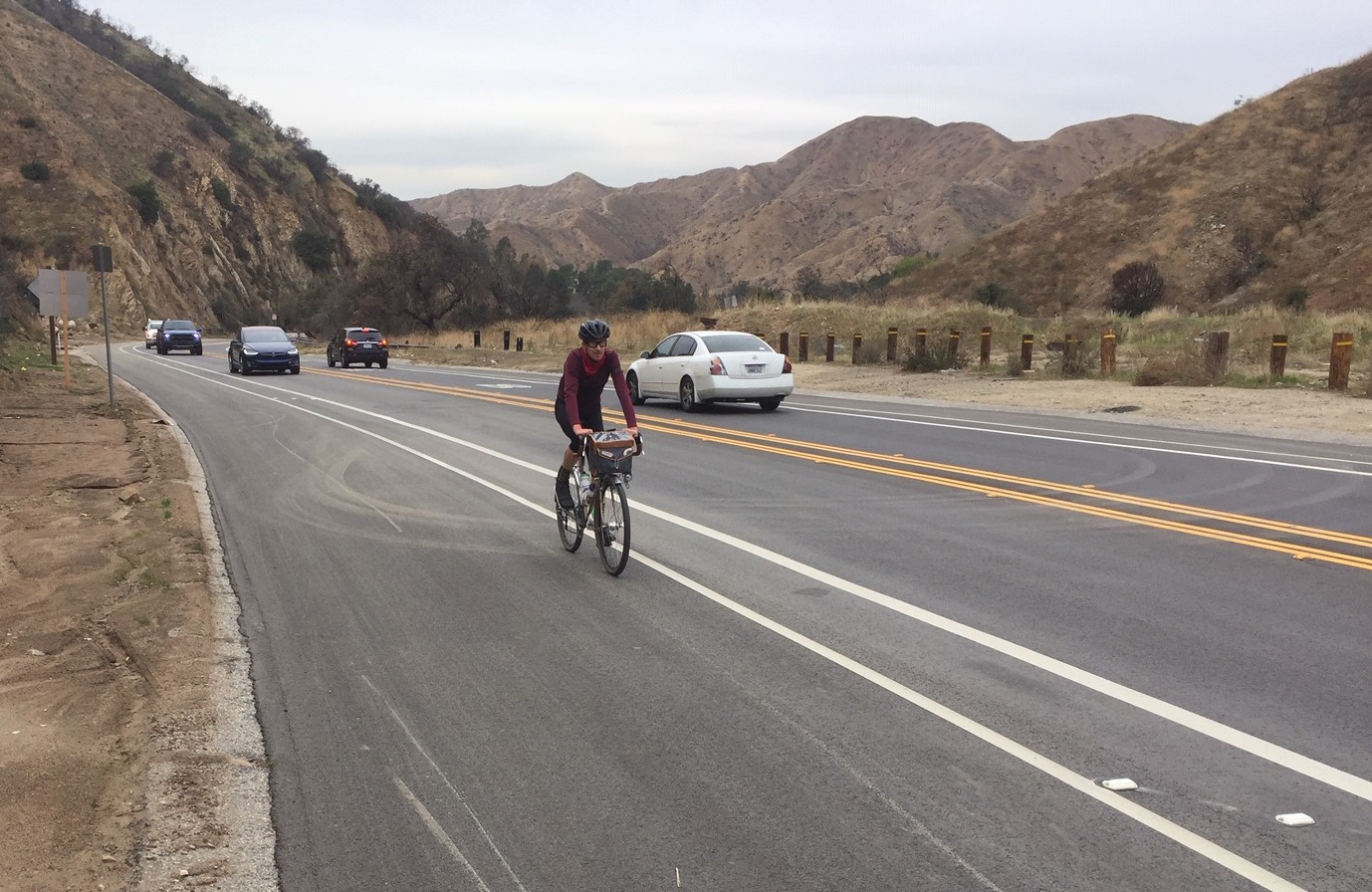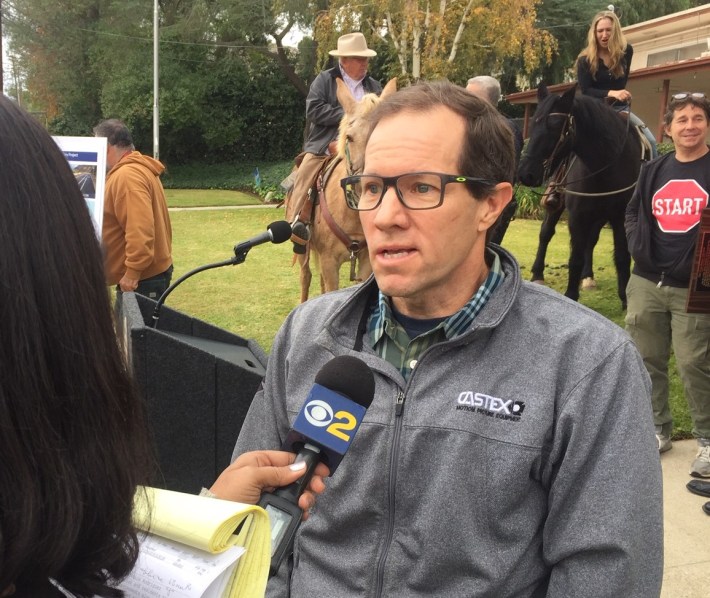
At an event this morning, L.A. City Councilmember Monica Rodriguez, community members, and city staff unveiled recently-completed safety improvements on La Tuna Canyon Road. Rodriguez emphasized the importance of harmonious coexistence between various road users, and stated that safer environments are among her top priorities.
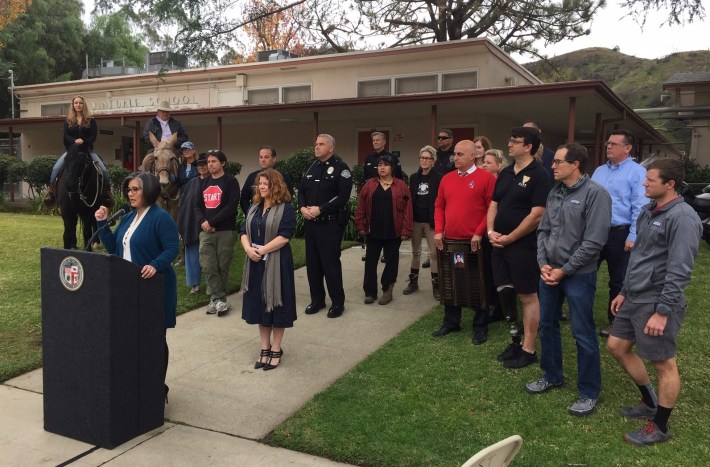
La Tuna Canyon is nestled in the hills in the north San Fernando Valley. The road connects the neighborhoods of Sun Valley and Sunland-Tujunga. Though within the city of L.A., the setting is relatively rural and home to many equestrians. La Tuna Canyon Road includes primarily residential areas as well as hilly and somewhat fire-prone wilderness. The road attracts plenty of recreational cyclists looking to climb in a relatively quiet setting with long stretches with no signals. Unfortunately, speeding drivers also prefer those long stretches, and use La Tuna Canyon Road to connect to the 210 Freeway.
On December 9, 2017, Keith Jackson was bicycling up La Tuna Canyon Road. He was struck from behind by a driver who fled the scene. Jackson spent about three weeks in a coma and still does not remember that day. He has yet to make a full recovery. Speaking haltingly at today's event, Jackson emphasized the need to make La Tuna Canyon safer, saying, "I'm one of the lucky ones... I survived. I want to make sure everyone survives."
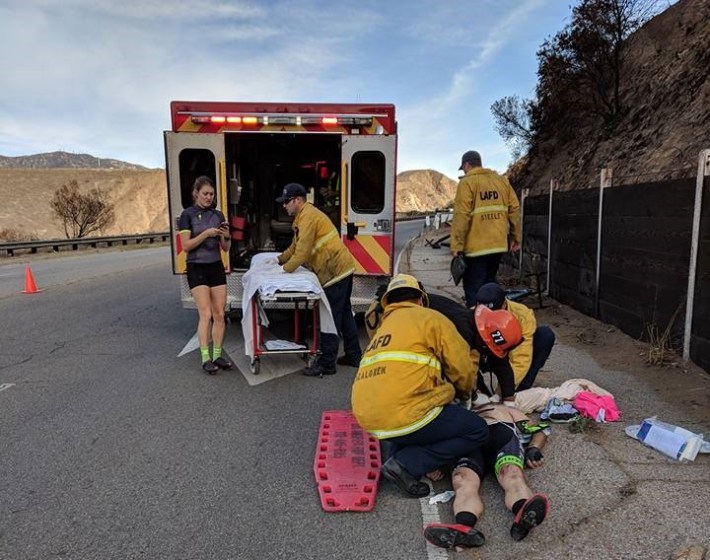
Following the life-threatening hit-and-run crash, Jackson reached out to Damian Kevitt of Streets Are For Everyone. They met with councilmember Rodriguez who worked with the city Department of Transportation (LADOT) to facilitate a community process to plan safety upgrades that many in La Tuna Canyon community had already been pushing for.
According to LADOT, the new design makes La Tuna Canyon Road safer by "decreasing speeds, discouraging unsafe passing, and providing protected lanes for cyclists, equestrians, pedestrians, and other users of this road."


The overall La Tuna Canyon Road Safety Project extends just over five miles from Sunland Boulevard to Tujunga Canyon Boulevard.
LADOT re-striped the entire project area, including upgrading crosswalks to the higher visibility zebra version.
The stretch where Jackson survived the hit-and-run crash received 1.2 miles of new buffered bike lane.
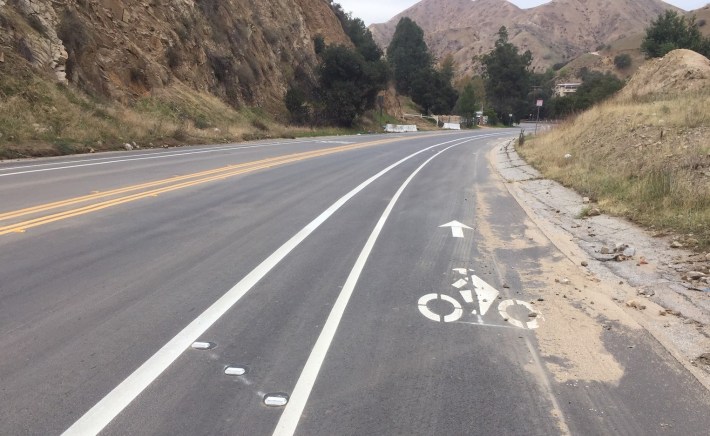
In this bike lane stretch, the city has added rumble strips to slow speeding downhill traffic.
Streetsblog spotted this driver dangerously swerving into the buffered bike lane to avoid a rumble strip.
Much of the easternmost three miles has been made safer by reducing four travel lanes to two, and adding a continuous painted double yellow line median as well as what the city is calling a "shared shoulder for bicyclists and equestrians."
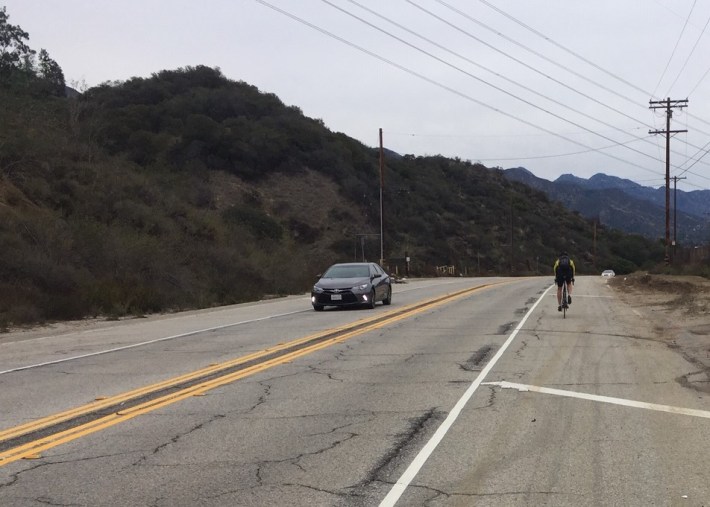
It does seem like the lane reduction missed some opportunities. The city added a welcome shared shoulder, but (for the easternmost roughly two miles) not specifically a bike lane. That bike lane was approved in the city's bike and mobility plans, but has gone un-implemented for decades.
Perhaps the council office and LADOT were looking to stave off the road diet backlash criticism. Some traffic safety deniers have been critical of nearby bike lanes in Sunland Tujunga that they say impeded fire evacuation. Though the critics do not blame bike lanes for similar evacuation traffic jams on the 210 Freeway. And, as a recent Curbed article points out, cars can't be the only way to evacuate. Clearly the buffered bike lane and the shared shoulder can serve as an emergency car lane during a wildfire evacuation.
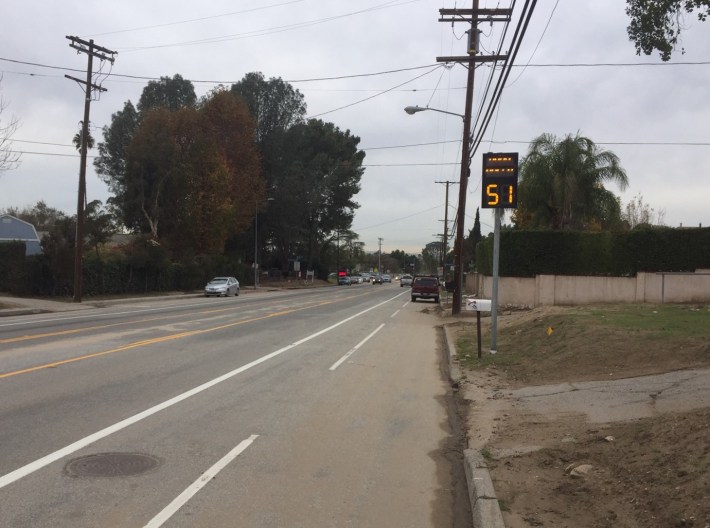
LADOT's project information sheet states that there are some additional longer term improvements planned, including new signals, stop signs, and, if speed surveys can support it, a reduced speed limit.
Kudos to Rodriguez, LADOT, Streets Are For Everyone, and the La Tuna Canyon Community for turning a disaster into an opportunity to make La Tuna Canyon safer for everyone.
